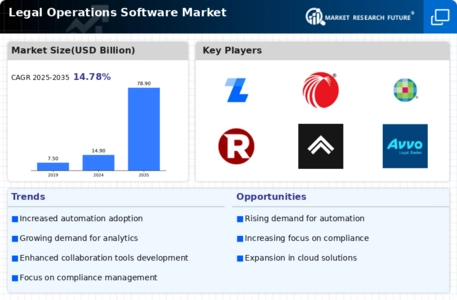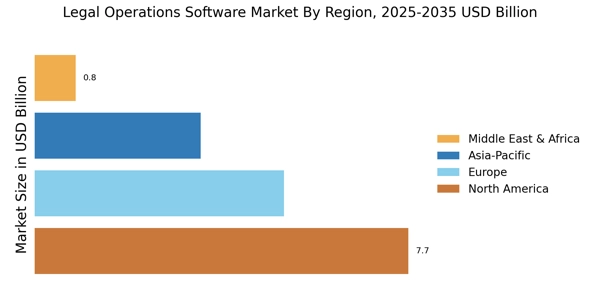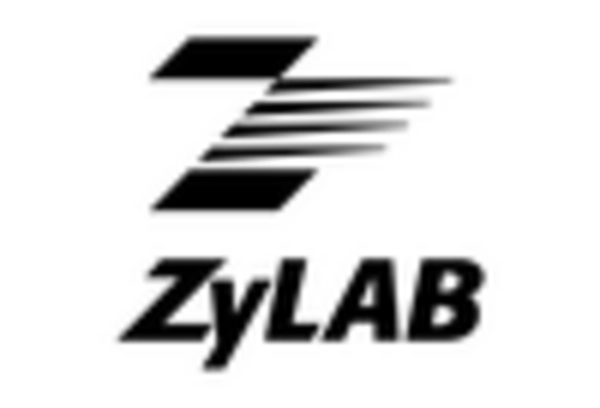Rise of Remote Work Culture
The Legal Operations Software Market is adapting to the rise of remote work culture, which has transformed how legal teams operate. As firms embrace flexible work arrangements, the need for collaborative and accessible legal operations software becomes paramount. This shift has led to an increase in the adoption of cloud-based solutions that enable seamless communication and document sharing among remote teams. Data suggests that approximately 60% of legal professionals prefer using software that supports remote collaboration. Consequently, the market is witnessing a surge in demand for tools that facilitate remote work, enhancing overall operational efficiency.
Increased Demand for Efficiency
The Legal Operations Software Market experiences a notable surge in demand for efficiency as legal departments seek to streamline their processes. Organizations are increasingly recognizing the need to reduce operational costs while enhancing productivity. According to recent data, legal departments that implement legal operations software report a 30% increase in efficiency. This trend indicates a shift towards automation and process optimization, allowing legal teams to focus on higher-value tasks. As firms strive to remain competitive, the adoption of legal operations software becomes a strategic imperative, driving growth in the market.
Integration of Advanced Analytics
The Legal Operations Software Market is witnessing a trend towards the integration of advanced analytics capabilities. Legal departments are increasingly leveraging data analytics to gain insights into their operations, improve decision-making, and enhance overall performance. By utilizing analytics, firms can identify trends, assess risks, and optimize resource allocation. The market is projected to expand as organizations recognize the value of data-driven strategies. Approximately 50% of legal professionals believe that analytics will play a crucial role in shaping the future of legal operations, indicating a strong potential for growth in this segment of the market.
Regulatory Compliance Requirements
The Legal Operations Software Market is significantly influenced by the evolving landscape of regulatory compliance. Organizations are compelled to adhere to stringent regulations, which necessitates the implementation of robust legal operations software. This software aids in tracking compliance requirements, managing documentation, and ensuring that legal practices align with industry standards. The market is projected to grow as companies invest in solutions that facilitate compliance management. With an estimated 40% of legal departments citing compliance as a top priority, the demand for specialized software solutions is likely to increase, further propelling the market.
Growing Importance of Data Security
The Legal Operations Software Market is increasingly focused on data security as legal firms handle sensitive information. With the rise in cyber threats, organizations are prioritizing the protection of client data and confidential documents. Legal operations software that incorporates advanced security features is becoming essential for firms aiming to safeguard their information. Recent statistics indicate that 70% of legal departments consider data security a critical factor when selecting software solutions. This heightened awareness of security risks is likely to drive the demand for legal operations software that offers robust security measures, thereby influencing market growth.


















Leave a Comment